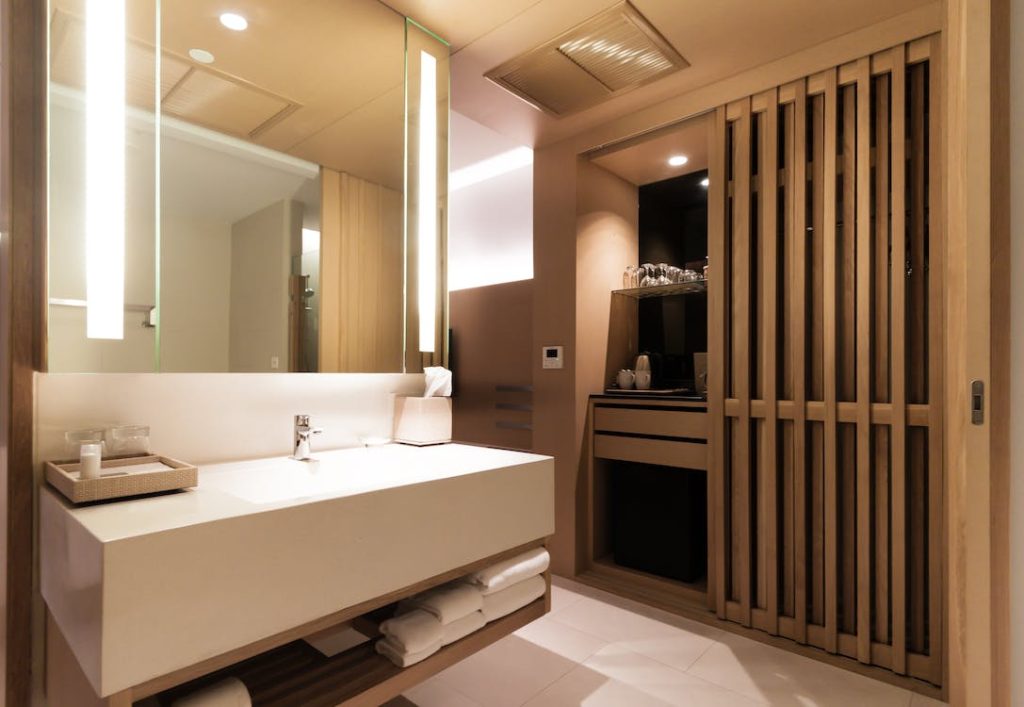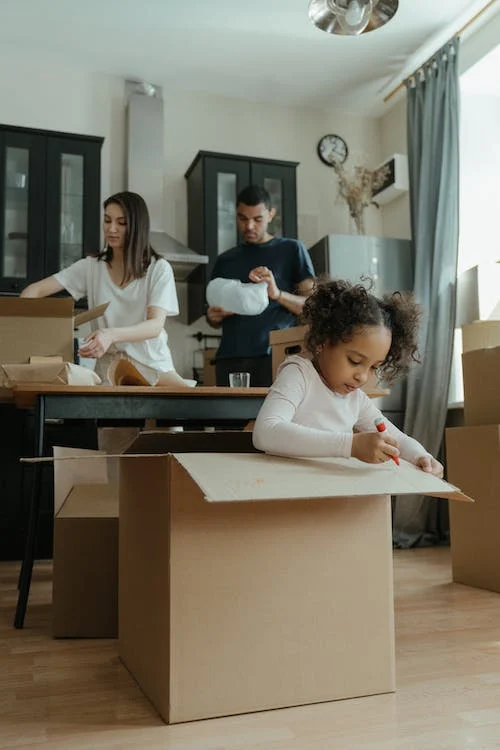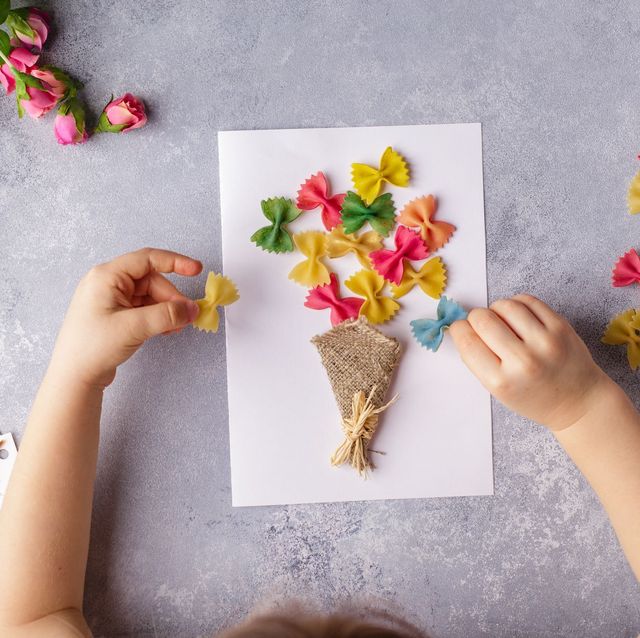
10 Steps to Make a Cardboard Bathroom Cabinet
Contents
– Step 1: Choose the correct type of cardboard
– Step 2: Draw the plans of the furniture
– Step 3: Create and cut the profiles
– Step 4: Cut the notches on the intermediate side
– Step 5: Cut and install the crosspieces
– Step 6: Assemble the profiles
– Step 7: Make the inside of the niches
– Step 8: Glue the sides and tops of the cabinet
– Step 9: Apply the gummed kraft on the edges
– Step 10: Finish your cardboard bathroom furniture
With a few cardboard boxes and a little time, it is possible to create all kinds of cardboard furniture. There are several techniques, but only the light structure held together by crosspieces is used in this method. Here, we’re talking about a tall, shallow bathroom cabinet made of niches.
Follow this step-by-step process to make a cardboard bathroom cabinet.
1. Choose the right type of cardboard

Cardboard furniture is made from fluted cardboard. There is single, double, and triple-fluted cardboard. It is possible to get this type of cardboard from professionals selling large items such as household appliances. The strength of a piece of furniture depends on the quality of the cardboard used.
Tip: Observe the number of flute lines in the thickness of the cardboard. The more flutes, the stronger the cardboard.
2. Draw the plans for the furniture

The dimensions of the furniture depending on the size of the cardboard used. Therefore, choosing cardboard boxes of the same size is preferable. The principle of cardboard furniture is the following: it is a light structure consolidated by internal crosspieces.
The size of your furniture will also depend on the space you will allocate to it in your bathroom. Measure this space before making your sketch.
– Draw your plan on a sheet of graph paper with all measurements (height, width, and depth). The structure of your cabinet should be made of three profiles:
◦ profile 1: front face (front);
◦ profile 2: intermediate face;
◦ profile 3: backside (bottom).
– Provide three to four niches (cut out of profiles 1 and 2).
3. Create and cut out the profiles

– Select 3 sheets of cardboard of the same size, corresponding to the three profiles whose dimensions you will have determined, making sure that the grooves are vertical.
– Trace the contours of the furniture on the three cardboards.
– Cut the profiles to the desired dimensions, following your plan:
◦ with a cutter, cutting each side one after the other;
◦ or with a jigsaw, assembling the 3 sides on top of each other with tape or gummed kraft, then cutting them all at once according to the contours.
– Cut out the contours of the niches on profiles 1 and 2 with a cutter.
– Number each profile.
4. Cut the notches on the intermediate face
– Use a cutter to make notches on each post of the intermediate face. These notches should be half the height of the thickness of the post (for example, for a thickness of 10 cm, cut an aperture of 5 cm).
– Make as many notches as possible. This will determine the strength of the structure.
5. Trim and install the rails
The rails, which will be inserted into the slots, form the skeleton of the cabinet. The length of the rails determines the depth of the furniture. They should all be the same length. However, the height of the crosspieces will vary according to their location.
– Cut the necessary number of crosspieces.
– Draw a mark in the middle of each rail.
– Coat each rail with glue from the glue gun.
– Insert each crossbar into the notches on the intermediate face, respecting the center mark.
6. Assemble the profiles
– Place the furniture base (profile 3) flat on the floor.
– Place the middle panel (profile 2) with its crosspieces on top.
– Place the front panel (profile 1) on top.
– Check the right angles of the whole structure with a square.
– Glue each crossbar on the right and left side with the glue gun to fix them to profiles 1 and 3.
– Let dry, then stand your furniture upright.
7. Make the interior of the niches
This step consists of designing the inside of the niches, one by one. They may have different dimensions, give or take a few millimeters.
The floor and ceiling of the niches
– Measure the depth and width of the niche.
– Be precise about the width. For the depth, you will be able to cut back if necessary.
– Glue the rails on which the floor will rest and place them on them.
– Turn the piece of furniture over to glue the niche ceiling similarly.
– Repeat the operation for each of the niches of the furniture.
The sides of the niches
– Measure the depth and height.
– Be precise about the height. As for the depth, you can always readjust it later.
– Glue the vertical posts of the furniture and apply the sides of the niche to them.
– Repeat the operation for each niche.
Finishing the niches
– If necessary, use a cutter to trim the excess on the front.
– Sand the edges of the niches with sandpaper.
8. Glue the sides and tops of the furniture
The sides
– Measure the sides of the furniture.
– Cut out pieces of cardboard according to these measurements.
– Glue the edges of the crosspieces and the uprights of the profiles on which the sides will be glued.
– Position the 2 cardboard plates and let dry.
The trays (top and bottom)
– Measure the top and bottom of the furniture.
– Cut out pieces of cardboard according to these measurements.
– Glue the edges of the sides and crosspieces, as well as the uprights of the profiles.
– Place the top tray and let it dry.
– Repeat with the bottom shelf.
9. Apply the gummed kraft on the edges
Prepare the furniture
– Sandpaper all edges of the furniture.
– Brush off any residue.
Apply the gummed kraft
– Cut a strip of kraft to size.
– Lay it on a flat surface.
– Moisten the entire length with a damp sponge.
– Place the end of the wet kraft on the beginning of the edge.
– Apply with the flat of your hand along the entire length of the edge, keeping the kraft strip taut.
– Do the same on the other side of the edge, pushing with your fingertips to ensure the kraft adheres well.
– Check and touch up the gummed kraft if necessary (especially on the edges of the niches).
10. Finish your cardboard bathroom furniture
Finish with tissue paper and acrylic paint
– Coat the cabinet with wallpaper paste.
– Tear off pieces of tissue paper.
– Apply the pieces of paper with a brush without making folds.
– Overlap the pieces of paper to cover the entire surface of the furniture.
– Allow half of the paper to overlap when covering an edge and fold it neatly over the other side of the edge.
– Cover the entire piece of furniture.
– Let it dry, then apply a second coat.
– Paint your furniture with acrylic paint.
Finishing with handmade paper
– Coat the entire piece with wallpaper paste.
– Apply the handmade paper with a brush, smoothing it well.
– Let it dry.
Vitrification of the furniture
Regardless of the finish chosen, the furniture must be glazed. It is recommended to use an aquarethane type sealant (commonly used for parquet floors) because it dries quickly, has little odor, and can be cleaned with water.
– Make sure your furniture is dry.
– Apply the sealant to the entire piece of furniture.
– Let it dry, then apply a second coat.
Materials needed to make a cardboard bathroom cabinet
Brush
Paper scissors
Wallpaper paste
Cutter
Sponge
Scribing square
Seamstress’ tape measure
Tape measure
Tissue paper
Sandpaper
Acrylic paint
Brush
Glue gun
Ruler 60 cm
Adhesive tape
Jigsaw




Pretty! This has been an incredibly wonderful article.
Many thanks for supplying this information.